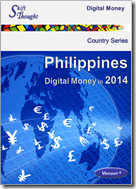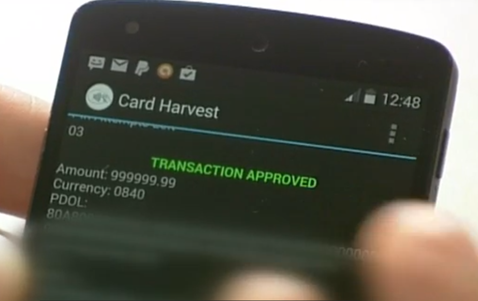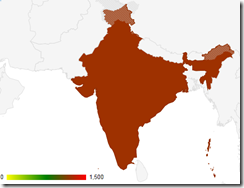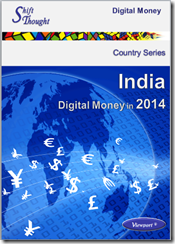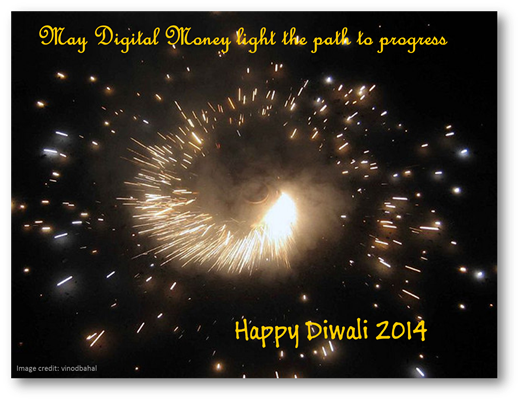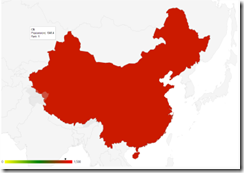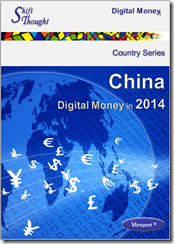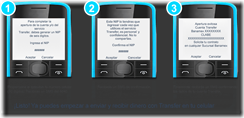Today I am speaking to Darren Bruce, who set up Ria Digital at Ria Financial Services, the third largest money transfer operator in the world. Darren shares with us what it means for remittances to go digital, the trends he observes and the outlook for 2015. Enjoy!
Darren, it is a pleasure to speak to you today. Could you please tell us a bit about yourself and your role at Ria Digital?
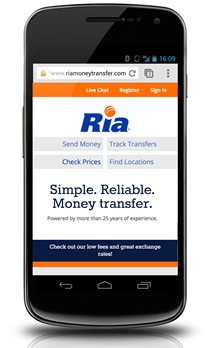 I joined Ria two years ago as Vice President and General Manager to create Ria Digital as a startup within Ria Financial Services, the money transfer division of Euronet. I oversee Ria’s digital business including the ground-up development and expansion of Ria’s digital products and services across the globe.
I joined Ria two years ago as Vice President and General Manager to create Ria Digital as a startup within Ria Financial Services, the money transfer division of Euronet. I oversee Ria’s digital business including the ground-up development and expansion of Ria’s digital products and services across the globe.
Prior to joining Ria I spent 4 years with the Western Union Company in Denver, Colorado, as Head of Global Emerging Product Operations. In this capacity, as you know Charmaine, I oversaw the strategic management and operational direction of the company’s new/emerging products consisting of e-commerce, account based money transfer, prepaid cards and mobile money transfer. Prior to Western Union, I lived in the Netherlands for 10 years where I worked for Canon, Cambridge Technology Partners, and Nike mainly focussed on web/e-commerce capacities.
I started Ria Digital to lead the company into the fast-paced world of customer needs in the digital age including linking the physical world, which Ria is already very strong, to digital world where the opportunities are endless.
Please could you give us some background about Ria Financial Services and how Ria Digital fits in, as well as how HiFX which you just acquired fits in. As a Group how do you work? I understand Euronet has become a big prepaid issuer in Europe
 Since opening our first storefront in 1987, we have grown into the third largest money transfer service in the world. Ria has over 240,000 locations in more than 130 countries—and growing very quickly—as well as connections to over 50k banks across 100 countries.
Since opening our first storefront in 1987, we have grown into the third largest money transfer service in the world. Ria has over 240,000 locations in more than 130 countries—and growing very quickly—as well as connections to over 50k banks across 100 countries.
In addition to money transfer services, Ria also offers bill payment, mobile top-ups, prepaid debit cards, and check cashing. In every service that we provide, we work hard to ensure a clear, simple and valuable experience.
In April this year  Walmart and Ria launched a retail industry first – Walmart-2-Walmart Money Transfer Service. Walmart-2-Walmart offers a clear fee structure with just two pricing tiers: customers can transfer up to $50 for $4.50 and up to $900 for $9.50. This leverages Walmart’s existing footprint and technology, with Ria being the licensed money transfer operator for all Walmart-2-Walmart transactions, and Walmart the authorized agent of Ria.
Walmart and Ria launched a retail industry first – Walmart-2-Walmart Money Transfer Service. Walmart-2-Walmart offers a clear fee structure with just two pricing tiers: customers can transfer up to $50 for $4.50 and up to $900 for $9.50. This leverages Walmart’s existing footprint and technology, with Ria being the licensed money transfer operator for all Walmart-2-Walmart transactions, and Walmart the authorized agent of Ria.
 In May this year Euronet acquired HiFX, this has been a great addition and very complementary to our core business. It is a UK-based mainly online initiated international payments and foreign exchange services provider that enables us to extend towards delivering an account-to-account international payment service to high-income individuals and small-to-medium sized businesses. HiFX transferred over $15bn for customers in the UK, Australia, New Zealand and Europe during 2013.
In May this year Euronet acquired HiFX, this has been a great addition and very complementary to our core business. It is a UK-based mainly online initiated international payments and foreign exchange services provider that enables us to extend towards delivering an account-to-account international payment service to high-income individuals and small-to-medium sized businesses. HiFX transferred over $15bn for customers in the UK, Australia, New Zealand and Europe during 2013.
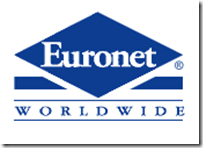 Looking at the Euronet level, our global payment network is extensive and it now includes over 19,000 ATMs, approximately 72,000 EFT POS terminals and a growing portfolio of outsourced debit and credit card services which are under management in 47 countries. We have card software solutions, a prepaid processing network of over 600,000 POS terminals at approximately 295,000 retailer locations in 33 countries. So in short, we have a lot of great products and capabilities as a group as you can see.
Looking at the Euronet level, our global payment network is extensive and it now includes over 19,000 ATMs, approximately 72,000 EFT POS terminals and a growing portfolio of outsourced debit and credit card services which are under management in 47 countries. We have card software solutions, a prepaid processing network of over 600,000 POS terminals at approximately 295,000 retailer locations in 33 countries. So in short, we have a lot of great products and capabilities as a group as you can see.
How much of Ria business is cash-to-cash and how much is digital?
As far as Ria Digital goes, we celebrated 2 years in October this year, so we are still quite new and have been focused on building the foundational elements needed to compete in the digital space. The vast majority of Ria’s business is still cash from the send side, delivered into accounts or as cash around the world.
As you can see, Ria has a robust set of products and capabilities, and at Ria Digital we are “digitizing” these products and services so we can offer our customers more convenience and choice. We are very complementary to our core business. Digital builds on the values and tradition of our core business while looking to target customers that have become accustomed to an easy, efficient online consumer experience. We get to innovate and push for change in this industry while standing on Ria’s solid foundation which is a big advantage—we have the network and the experience behind us.
It is also important to note that “customers” are not only end consumers, they are also our key partners, those who are looking for a company to help power their financial services in an easy, simplistic way, and can move quickly to deliver – this is a very important part of our strategy.
What are some of the key trends you observed in the remittances industry over the last year?
Well, I guess sending money using the digital channel is old news now, and the mobile trend has also been obvious for years, but specifically around “digital”, it is the experience within the channel that has continued to evolve. There are so many new technologies that remove, or at least improve, the friction at various points throughout the customer experience. It has made sending money online a lot easier and safer than in the past.
I mentioned key partners already, and the truth is there are more and more companies looking to add money remittance to their current offerings or product sets. Companies that have not been involved in remittance are jumping into the mix, a lot of them up the game from a user experience or brand perspective, but money remittance is not an easy business to enter, therefore these companies look to partner with companies like Ria who know how to do it, we’ve been talking to immigrant remitters for 30 years.
At Ria Digital we move at the pace of a startup, within days rather than months and years!
How do you see the recent entrants such as Apple Pay and Google Wallet and what this may mean to MTO business?
There is a lot of talk about these new entrants recently and I see this really reaffirming and validating digital payments. People have been mainly taking about what’s happening at the POS but there is a lot happening in the online experience as well by removing friction, for instance, on-boarding of new customers is becoming easier.
Anyone who has anything to do with commerce or financial services on the handset and pushes the envelope on the experience really helps all of us get better.
How are people taking to digital channels around the world – are there some interesting regional differences?
There are definitely regional differences when it comes to money transfer in the digital channels, no two global markets are identical; each is driven by local conditions of environment (economic, technological, and demographic elements such as a market’s average income, and access to the Internet), infrastructure (broadband and/or mobile phone penetration), regulation (legal and governmental areas such as compliance and eKYC), financial services (the accessibility of financial services, the options for paying online), and most important of all – consumer readiness (their familiarity with, and willingness to use digital channels).
How has the advent of smartphones affected how people transfer money?
Today, out of the seven billion people in the world, approximately six billion are cell phone subscribers. Not all of these own a “smartphone”, but smartphone penetration is growing very quickly. For many people, the phone is the primary or sole internet connection, no need for a PC. The point is that these connected devices put a lot of power in the hands of the consumer and provide them a great deal of choice and convenience.
Aside from sending an actual money transfer, customers can easily check exchange rates, compare service providers, view the status of their transaction, and even find a physical location where they can send or pick up a transaction, which is a great example of how smartphones are connecting the physical world to the digital world.
Another obvious area related to phones is stored value / Prepaid debit cards and mobile wallets which empower the “un” or “under” banked, and allow these customers to take part in the ecommerce and/or digital financial services world. Specifically in regards to money transfer, these customers had no other choice in the past but to travel to a physical location with cash in order to send money to loved ones back home, now they can send from the palm of their hand easily and securely.
Are there some key opportunities you see in the evolution of money transfer?
Specifically when it comes to money transfer in the digital channels I think there are many opportunities in terms of taking more costs out of the process. Performing electronic verification, taking payments online, and mitigating fraud are all necessary but add cost to the process.
At Ria we pride ourselves on providing a fair price to consumers, it is very important to us, and the more costs that can be reduced in a transaction, the more savings that can be passed on to the customer.
What are some of the challenges faced by providers?
As you know Charmaine, we are in a highly regulated industry, and therefore we have some very important responsibilities to ensure we provide safe, reliable, and compliant services for our customers. There is a lot of work, and skill required to ensure this, and at Ria compliance is number 1, we have a great team of people who focus on this day in and day out, and that extends far beyond our Compliance team.
Everyone at Ria is responsible for compliance, it is in our DNA. So I would say compliance is both a challenge and an opportunity.
What is your vision for 2015?
That’s just around the corner isn’t it!
Over the past 2 years we have built the foundational elements, and developed the key capabilities that are required in the Digital space, in 2015 we will start to capitalize on these efforts as we accelerate our current US business, expand our service globally, and deliver on our Partner Program, which as I mentioned earlier is an important part of our strategy. We are in a very exciting time, the space is buzzing.
It has been a real pleasure to speak with you Darren, thanks for sharing your thoughts with us and wish you the very best for the ambitious plans you have going forward.
Darren Bruce is Vice President and General Manager of Ria Digital for Ria Financial Services, the money transfer division of Euronet Worldwide, Inc. He has held this position since October 2012. Darren oversees Ria’s digital business including the ground-up development and expansion of Ria’s digital products and services across the globe. Darren has a Bachelor of Science Degree (Physics, Math, and Engineering) from Mount Allison University in Sackville, Canada. He also has a Diploma in Applied Information Technology from the Information Technology Institute in Halifax, Canada.
Ria Digital Website : https://www.riamoneytransfer.com
Charmaine Oak is Author of The Digital Money Game, co-author Virtual Currencies – From Secrecy to Safety
http://www.linkedin.com/in/charmaineoak
Join me on Twitter @ShiftThoughtDM and The Digital Money Group on LinkedIn
Thank you for reading, and thanks in advance for sharing about us to your network!
==








.jpeg?sfvrsn=0)


